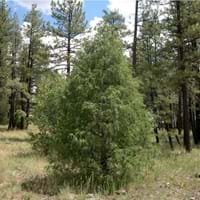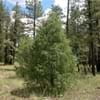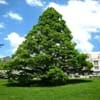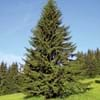Life Span
Perennial
Perennial
Type
Needled or Scaled Evergreen
Flowering Plants, Fruits, Trees
Origin
North America
Central Asia
Types
Not available
Aceymac apple, Bailey Sweet apple, Dabinett apple, Nehou apple
Number of Varieties
Not Available
Habitat
Deciduous forests, Rocky areas, rocky outcrops
Hillside
USDA Hardiness Zone
3-7
5-8
Sunset Zone
1a, 1b, 2a, 2b, 3a, 3b, 4, 5, 6, 7, 8, 9, 10, 11, 12, 13, 14, 15, 16, 17, 18, 19, 20, 21, 22, 23, 24
A1, A2, A3, 8, 9, 10, 11, 12, 13, 14, 15, 16, 17, 18, 19, 20, 21, 22, 23, 24
Habit
Narrow Upright/Fastigiate
Oval or Rounded
Flower Color
Not Available
White
Flower Color Modifier
Bicolor
Not Available
Fruit Color
Not Available
Green, Red
Leaf Color in Spring
Blue Green
Dark Green
Leaf Color in Summer
Not Available
Green
Leaf Color in Fall
Blue Green
Brown, Green, Light Yellow
Leaf Color in Winter
Blue Green
Not Available
Leaf Shape
Scale-like imbricate
Oblong
Plant Season
Spring, Summer, Fall, Winter
Spring
Sunlight
Full Sun, Partial Sun
Full Sun, Partial shade
Type of Soil
Clay, Loam
Loamy
The pH of Soil
Acidic, Neutral, Alkaline
Neutral
Soil Drainage
Well drained
Well drained
Bloom Time
Early Spring, Late Winter, Mid Spring
Fall, Summer
Tolerances
Drought
Drought
Where to Plant?
Container, Ground, Pot
Ground
How to Plant?
Cuttings, Seedlings
Grafting, Seedlings, Transplanting
Plant Maintenance
Medium
Medium
Watering Requirements
Does not require water in summer, Keep the Soil well drained, Medium
Medium
In Summer
Lots of watering
Lots of watering
In Spring
Moderate
Moderate
In Winter
Average Water
Average Water
Soil pH
Acidic, Neutral, Alkaline
Neutral
Soil Type
Clay, Loam
Loamy
Soil Drainage Capacity
Well drained
Well drained
Sun Exposure
Full Sun, Partial Sun
Full Sun, Partial shade
Pruning
Remove damaged leaves, Remove dead branches, Remove dead leaves
Prune when plant is dormant, Remove dead or diseased plant parts
Fertilizers
All-Purpose Liquid Fertilizer
All-Purpose Liquid Fertilizer
Pests and Diseases
Red blotch
Aphids, Canker, Caterpillars, Powdery mildew, Root rot
Plant Tolerance
Drought
Drought
Flowers
Insignificant
Yes
Flower Petal Number
Single
Single
Foliage Texture
Medium
Medium
Foliage Sheen
Matte
Matte
Attracts
Flying insects, Hummingbirds
Birds
Allergy
Not Available
Mouth itching, Throat itching
Aesthetic Uses
Bonsai, Hanging Basket, Showy Purposes, Used for decorating walls, fences, gates, hedges, etc.
Not Available
Beauty Benefits
Not Available
Not Available
Environmental Uses
Air purification
Air purification
Medicinal Uses
Appetizer, Diaphoretic, Disinfectant, Diuretic, Hemostatic, Laxative, Sedative, Tonic
Cancer, constipation, Diabetes, Diarrhea, Dysentry, Fever, Heart problems, Tooth ache
Part of Plant Used
Fruits, Leaves, Shoots
Fruits
Other Uses
Air freshner, Pesticide, Repellent, Shelterbelt, Showy Purposes, Wax, Wood is used in construction
Used As Food, Wood is used for making furniture
Used As Indoor Plant
No
No
Used As Outdoor Plant
Yes
Yes
Garden Design
Container, Edging, Feature Plant, Foundation, Groundcover, Hedges, Mixed Border, Topiary, Bonsai, Espalier
Fruit / Fruit Tree, Shade Trees, Showy Tree
Botanical Name
JUNIPERUS scopulorum 'Skyrocket'
Malus domestica
Common Name
Skyrocket Juniper
Apple Tree
In Hindi
skyrocket juniper
सेब का वृक्ष
In German
die Höhe schnellen Wacholder
Apfelbaum
In French
monter en flèche genévrier
Pommier
In Spanish
dispararse enebro
Manzano
In Greek
ανεβάσει στα ύψη αρκεύθου
μηλιά
In Portuguese
foguete zimbro
Macieira
In Polish
jałowiec Skyrocket
jabłoń
In Latin
skyrocket iuniperorum
Arbore
Phylum
Pinophyta
Magnoliophyta
Class
Pinopsida
Magnoliopsida
Family
Cupressaceae
Rosaceae
Clade
Not Available
Angiosperms, Eudicots, Rosids
Tribe
Not Available
Not Available
Subfamily
Cupressoideae
Not Available
Number of Species
Not Available
Season and Care of Skyrocket Juniper and Apple Tree
Season and care of Skyrocket Juniper and Apple Tree is important to know. While considering everything about Skyrocket Juniper and Apple Tree Care, growing season is an essential factor. Skyrocket Juniper season is Spring, Summer, Fall and Winter and Apple Tree season is Spring, Summer, Fall and Winter. The type of soil for Skyrocket Juniper is Clay, Loam and for Apple Tree is Loamy while the PH of soil for Skyrocket Juniper is Acidic, Neutral, Alkaline and for Apple Tree is Neutral.
Skyrocket Juniper and Apple Tree Physical Information
Skyrocket Juniper and Apple Tree physical information is very important for comparison. Skyrocket Juniper height is 460.00 cm and width 60.00 cm whereas Apple Tree height is 25.00 cm and width 20.00 cm. The color specification of Skyrocket Juniper and Apple Tree are as follows:
Skyrocket Juniper flower color: Not Available
Skyrocket Juniper leaf color: Blue Green
Apple Tree flower color: White
- Apple Tree leaf color: Dark Green
Care of Skyrocket Juniper and Apple Tree
Care of Skyrocket Juniper and Apple Tree include pruning, fertilizers, watering etc. Skyrocket Juniper pruning is done Remove damaged leaves, Remove dead branches and Remove dead leaves and Apple Tree pruning is done Prune when plant is dormant and Remove dead or diseased plant parts. In summer Skyrocket Juniper needs Lots of watering and in winter, it needs Average Water. Whereas, in summer Apple Tree needs Lots of watering and in winter, it needs Average Water.





